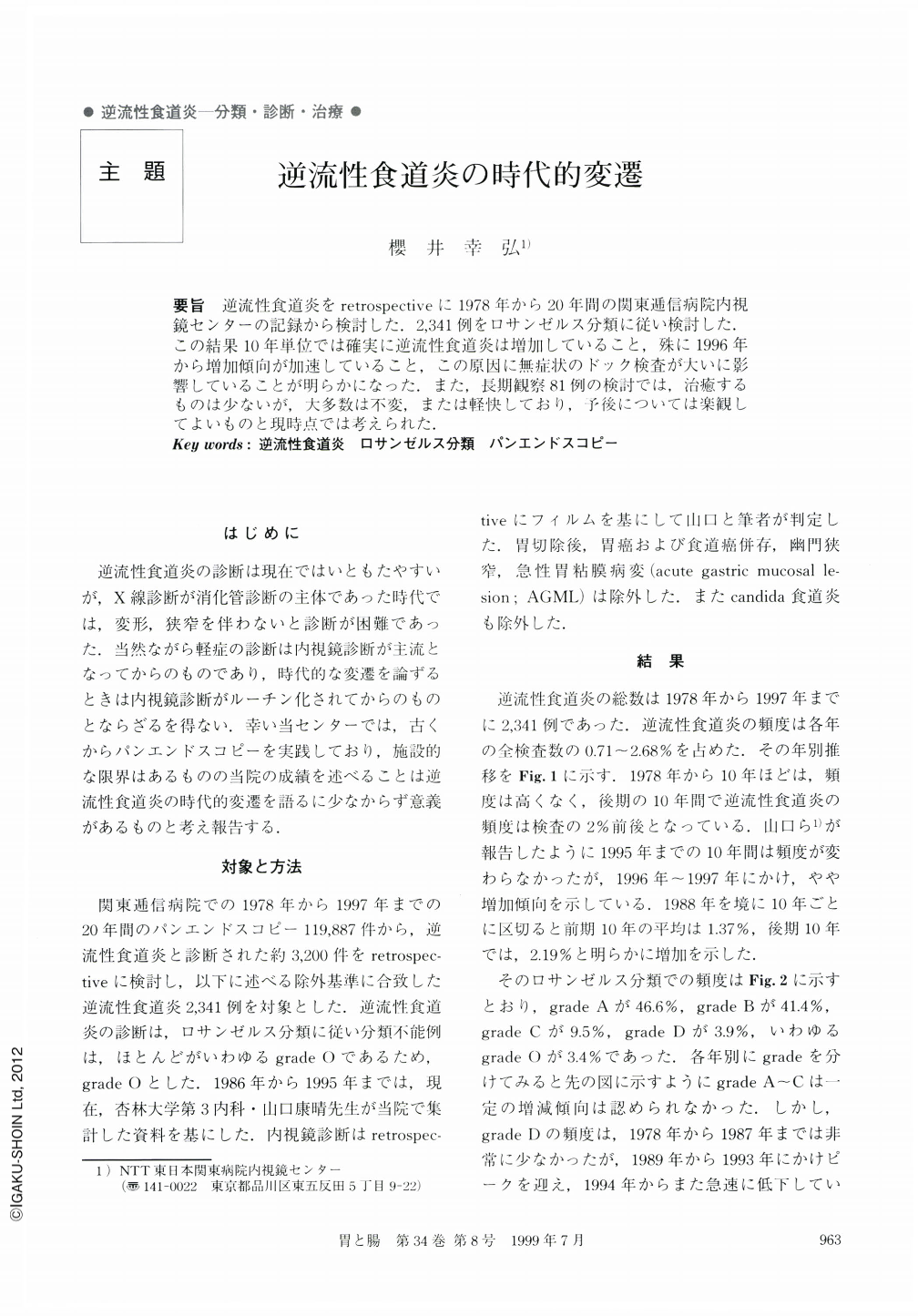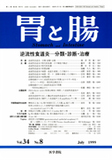Japanese
English
- 有料閲覧
- Abstract 文献概要
- 1ページ目 Look Inside
- サイト内被引用 Cited by
要旨 逆流性食道炎をretrospectiveに1978年から20年間の関東逓信病院内視鏡センターの記録から検討した.2,341例をロサンゼルス分類に従い検討した.この結果10年単位では確実に逆流性食道炎は増加していること,殊に1996年から増加傾向が加速していること,この原因に無症状のドック検査が大いに影響していることが明らかになった.また,長期観察81例の検討では,治癒するものは少ないが,大多数は不変,または軽快しており,予後については楽観してよいものと現時点では考えられた.
Two thousand four hundred and thirty one cases of gastroesophageal reflux disease (GERD) are analysed retrospectively from the panendoscopy film of 119,887 endoscopy cases at the Kanto-Teishin Hospital Endoscopic Center. Each GERD is divided by Los-Angels classification. The overall incidence of GERD was 1.95%, but in the last ten years, the incidence has risen to 2.2%. This increase is explained by the increased frequency of health check endoscopy and the increased of aged patients. The incidence of GERD in females increases with age, but GERD in males reaches its maximum incidence in the 60-year-old age bracket and decreases at higher ages.
The symptom of heart burn is found in only 14%of cases and coincidental discovery is the most frequent way in which the disease comes to be recognized.
The complication of sliding hernic is found more prequentty as the grade of GERD increases. It is present in 40% of cases at the grade D stage.
The coincidence of peptic ulcer decreased rapidly in the last 2 years, reflecting striking changes in the gastro-duodenal environment of Japanese digestiv tract.
In follow-up observation for more than 3 years (3 to 17 years (5.9 years)) of 81 cases, there were no interval change GERD, 35 cases where no difference was observed, and 28 cases of recovery. This suggests that the prognosis for GERD is relatively well.

Copyright © 1999, Igaku-Shoin Ltd. All rights reserved.


